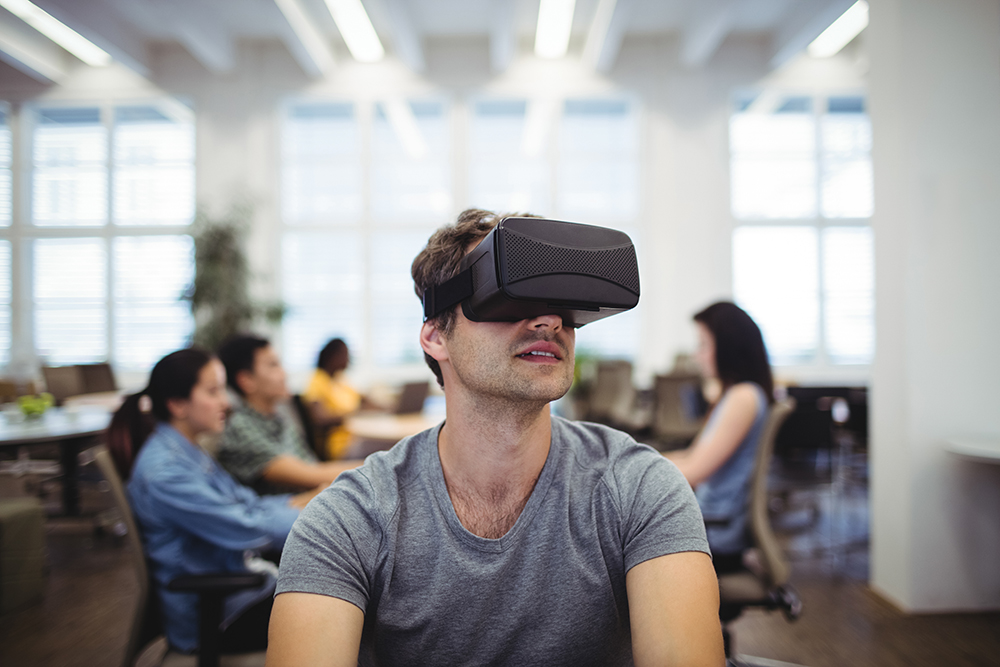Virtual Reality in Daily Life
People are inventive. Architects, engineers, designers, dreamers write their thoughts on paper, and with a lot of time and effort, they produce a finished product close to what they imagined.
With time and technology advances and with the help of the dreamers, people began to express their ideas using high-end hardware, modeling etc. People were able to actually see their masterpieces on the screen. But, the technology didn’t solve a major problem: getting ideas into the physical world without building it.

Technological advancements never cease to amaze the ordinary consumer. Where we used to have an obstacle or inconvenience, today, we look for potential technological solutions. The virtual world has come closer to physical one with Augmented (Virtual) Reality. The fact it began with a simple mobile game didn’t lessen VR’s capacity to perform daily life tasks. Furthermore, it has helped businesses, like engineering, medicine, gaming, architecture and interior design make giant strides toward the future. From that list, the closest we get to experience these innovations is gaming and interior design. The first seems a good way to forget about the real world, while the second brings beauty and convenience. Interior design is something we experience everyday: hanging a painting on the wall or moving into a new house or buying new sofa.
Once in while, you need to completely rearrange the furniture in your house. The first step is to make a «blueprint» of the project in your head or on a piece of paper. It takes some time to figure out the best possible solution, a lot of trashed paper, and in the end, all you get is a bare bones sketch with no actual decisions. The next logical step is to find some muscles or hire specially trained professionals, and move everything according to the plan. During this process, your sofa doesn’t really fit through the door. When it finally does and is in the desired spot, you have is no room for anything else. Plus the table from the hall doesn’t look good in the living room making it a hodge-podge of colours.
Those issues are common for the simple task of rearranging the house in pursuit of a fresh look, turning your day and house upside down.. There might have been viable arrangements, but the plan didn’t account for dimensions, colours or shapes, leaving you with «extra» furniture and strange looking living room.
Another experience of interior design many people face is when they move into a new house or a rental flat. Not all rentals come with painted walls, installed plumbing or furniture. Some try the hard way by doing it themselves without the guarantee of success. The rest hire a designer to get advise and 2D drawings of the interior’s plans. Although the designer and the customer are able to clearly express their vision, there is always the possibility of missing how certain objects fit in the concept and how the chosen colors produce the desired atmosphere.
These projects can be described as reasonably easy. There are more important and more difficult tasks like building a house, the highest skyscraper or a space station. Those kinds of projects require precision and a complete understanding of the end results. They are usually done by acknowledged professionals and with use of special software. Investors don’t want to be involved until they see something besides pictures on a screen and an empty field where the skyscraper will be build.
Today, the problem of Interior Design can be solved with Virtual Reality. Imagine walking across an empty field and seeing the foundation of your future house. A moment later it is 3 storey house, and when you enter, there are walls with family photos, children’ toys in every room, a fully equipped kitchen etc.
Integrating VR into the interior design routine brings incredible results. Instead of an old-school drawing, explaining, or imagining how a room may look, people can enter a Virtual reality with the help of a device and literary walk through different versions of their living room. This allows them to see every angle, experience the space and feel satisfied with upcoming investments.
VR transforms how manufacturers and sellers engage their customers. There isn’t the need to look for the right curtains, bed, chandelier in catalogs, on web-sites or by visiting stores. The process comes with putting on the VR device and seeing how it looks on the wall in front of you.
The industry of VR technology is growing fast. With analytics predicting faster revenue growth, more companies are deciding to target this technology. It will take some time for new companies get enough expertise to provide a proper product to the market. Besides IT giants, today’s industry has a limited number of companies with expertise in multiple IT fields. At United Perfectum we have successfully finished projects, including VR in Telecom, Healthcare, and Entertainment; making it one of the best choices for your future Interior Design VR apps.





